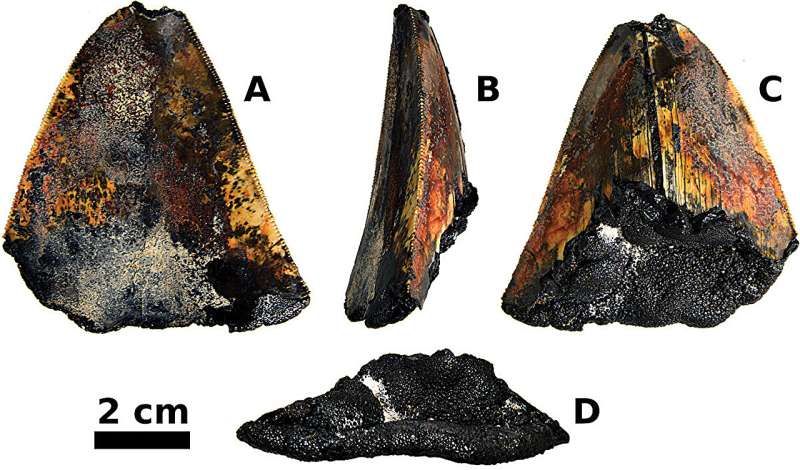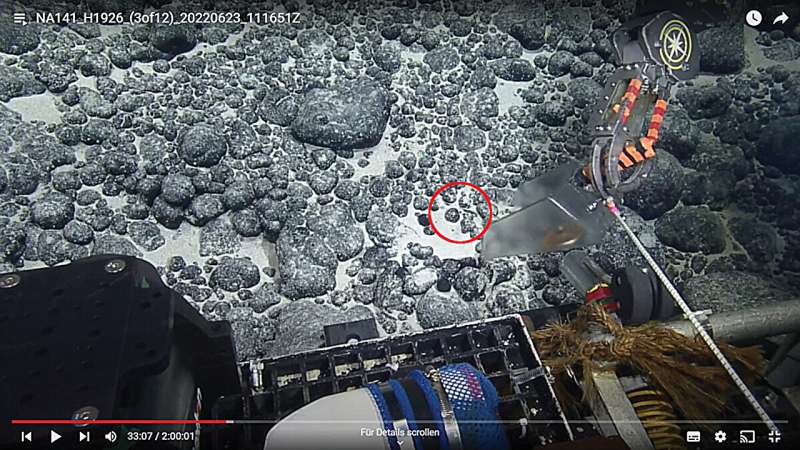December 21, 2023 report
This article has been reviewed according to Science X's editorial process and policies. Editors have highlighted the following attributes while ensuring the content's credibility:
fact-checked
peer-reviewed publication
trusted source
proofread
First in situ documentation of a fossilized megalodon tooth in the deep sea

A small team of oceanographers affiliated with several institutions in the U.S., working with a zoologist from the SNSB-Bavarian State Collection of Zoology, in Germany, has documented the first in situ discovery of a fossilized megalodon tooth in the deep sea. In their paper, published in the journal Historical Biology, the group describes how they discovered the ancient shark took and what the study of it revealed about its condition.
Prior research has shown that megalodons were an extinct species of giant mackerel shark that lived from 3.6 to 23 million years ago—members of its species are believed to have been among the largest and most powerful predators ever to have lived.
Very little evidence of the shark has been found, however—most of it in the form of fossilized teeth. Such teeth have been found in a variety of locations, including sandy beaches and sticking out of fossilized whale bones. But until now, no megalodon tooth has ever been found in the location where it originally settled after exiting the mouth of its owner.

The researchers found the tooth by accident. They were on a ship off the coast of the Johnson Atoll, in the Pacific Ocean, surveying the ocean floor using a remotely controlled underwater robot, when they happened to spot the tooth sticking nearly straight up out of the sand. After taking pictures and video of the tooth, they had their robot extract it. Later, after studying the tooth in their lab, they found it to be in nearly pristine condition, particularly its serrated edge.
The research team suggests the tooth was able to remain in its original position due to its location on the sea floor, a part of the ocean where strong currents prevent buildup of sediment. In this case, it also prevented sediment from wearing away features of the tooth. It had clearly not been tossed and tumbled—it had remained firmly in the place where it originally fell. They note that the tooth was not from a particularly large shark; it measured just 63 to 68 millimeters in length, but its positioning could help ocean scientists learn more about the ancient sea creatures.
More information: Jürgen Pollerspöck et al, First in situ documentation of a fossil tooth of the megatooth shark Otodus ( Megaselachus ) megalodon from the deep sea in the Pacific Ocean, Historical Biology (2023). DOI: 10.1080/08912963.2023.2291771
Journal information: Historical Biology
© 2023 Science X Network





















